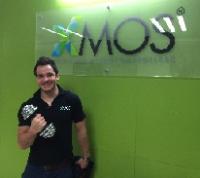as the title:
why startkit have no specific datasheet for its main chip ?
1.for security consideration ?
2.for have no time to write a datasheet ?
if I want to use xmos chip to commercial project ,it may cause trouble when I deliver it from startkit to A8 or A16 dev
why startkit have no specific datasheet for its main chip ?
-
SUNROC1
- Member++
- Posts: 16
- Joined: Sat Apr 12, 2014 7:18 am
-
sethu_jangala

- XCore Expert
- Posts: 589
- Joined: Wed Feb 29, 2012 10:03 am
The device available on startKIT is A16. You can get the data sheet of the device from the following link:
https://www.xmos.com/download/public/XS ... 19J%29.pdf
On startKIT, one tile is used for debugging and the other tile is available for programming. So, you can use only one tile on startKIT to develop applications.
Sethu.
https://www.xmos.com/download/public/XS ... 19J%29.pdf
On startKIT, one tile is used for debugging and the other tile is available for programming. So, you can use only one tile on startKIT to develop applications.
Sethu.
-
Ross
 Verified
Verified - XCore Legend
- Posts: 1307
- Joined: Thu Dec 10, 2009 9:20 pm
- Location: Bristol, UK
The device on the start kit is an A8-DEV. Essentially it has the functionality of an A8 and a XTAG in one package.
For a commercial project you should use an A8 (with a connector to allow debug via an external/separate XTAG debug adapter)
For a commercial project you should use an A8 (with a connector to allow debug via an external/separate XTAG debug adapter)
-
Bianco

- XCore Expert
- Posts: 754
- Joined: Thu Dec 10, 2009 6:56 pm
The actual device is the XS1-U16A-128-FB217.
But as sethu said one tile and the USB interface is dedicated to implement the onboard debugger.
It would be confusing too if one would reference to this device making people think that both tiles and the USB interface are available for user applications, hence the "virtual" device A8-DEV.
But as sethu said one tile and the USB interface is dedicated to implement the onboard debugger.
It would be confusing too if one would reference to this device making people think that both tiles and the USB interface are available for user applications, hence the "virtual" device A8-DEV.
-
SUNROC1
- Member++
- Posts: 16
- Joined: Sat Apr 12, 2014 7:18 am
whats the difference between XTAG and J-link ,I wanna to know may I use my J-link to debug startkit, I find it has xtag interface on the back side of startKIt board.Ross wrote:For a commercial project you should use an A8 (with a connector to allow debug via an external/separate XTAG debug adapter)
-
SUNROC1
- Member++
- Posts: 16
- Joined: Sat Apr 12, 2014 7:18 am
thank you very much ,do you have ways to release the debugging tile ? I want to use it as 16 coresethu wrote:The device available on startKIT is A16. You can get the data sheet of the device from the following link:
https://www.xmos.com/download/public/XS ... 19J%29.pdf
On startKIT, one tile is used for debugging and the other tile is available for programming. So, you can use only one tile on startKIT to develop applications.
Sethu.
-
infiniteimprobability
 Verified
Verified - XCore Legend
- Posts: 1177
- Joined: Thu May 27, 2010 10:08 am
Good luck! There are a few guys on here trying the same thing but the A8dev chip has OTP blown to make the second tile a dedicated debug adapter. It'll be a tough job working around that, but maybe possible, maybe not (I am not sure). If you fancy a challenge then go for it, but you may find it more efficient to pickup a 16 core dev kit..thank you very much ,do you have ways to release the debugging tile ? I want to use it as 16 core
-
segher

- XCore Expert
- Posts: 844
- Joined: Sun Jul 11, 2010 1:31 am
It is possible :-)
The hard parts are how to boot the system, how to debug
the system, and how to make it work together with the XMOS
tools.
Another thing is how to make this useful at all; cpu #0
has almost no I/O pins you can use.
The most useful thing I came up with (no time to implement
it yet, sigh) is an alternate debug firmware that in addition
to the normal USB debug endpoints also provides some extra
endpoints that it makes available to cpu #1 via channel ends.
So in effect you will still run a single cpu program _but_ it
can now communicate with the host over USB.
The hard parts are how to boot the system, how to debug
the system, and how to make it work together with the XMOS
tools.
Another thing is how to make this useful at all; cpu #0
has almost no I/O pins you can use.
The most useful thing I came up with (no time to implement
it yet, sigh) is an alternate debug firmware that in addition
to the normal USB debug endpoints also provides some extra
endpoints that it makes available to cpu #1 via channel ends.
So in effect you will still run a single cpu program _but_ it
can now communicate with the host over USB.
